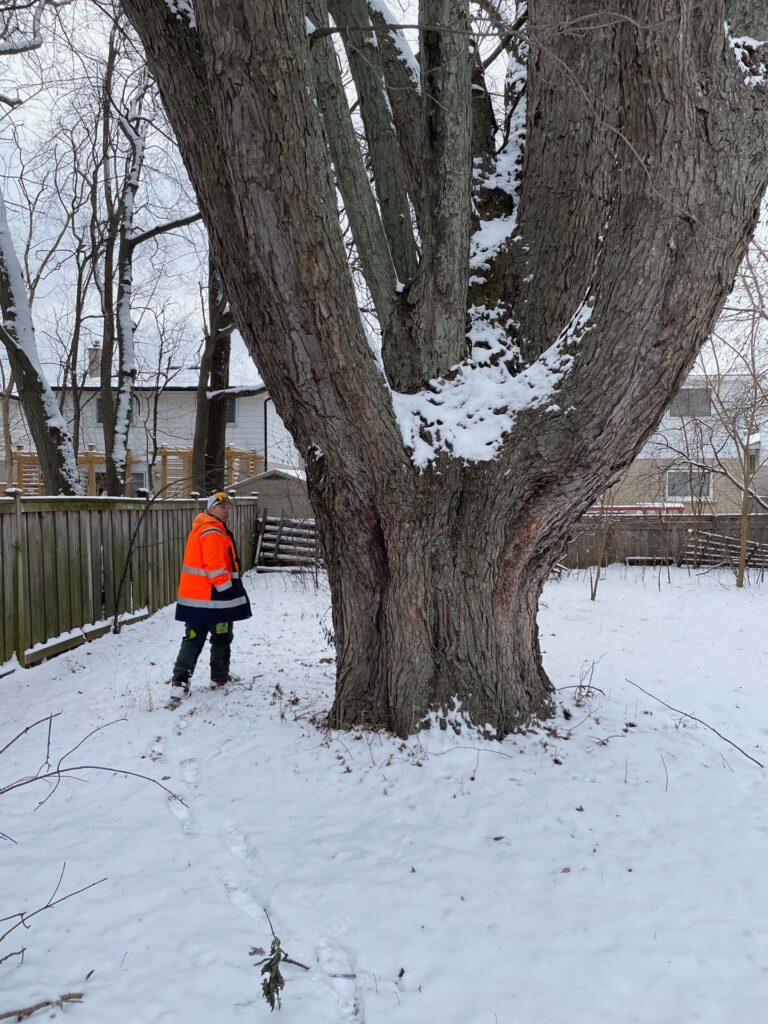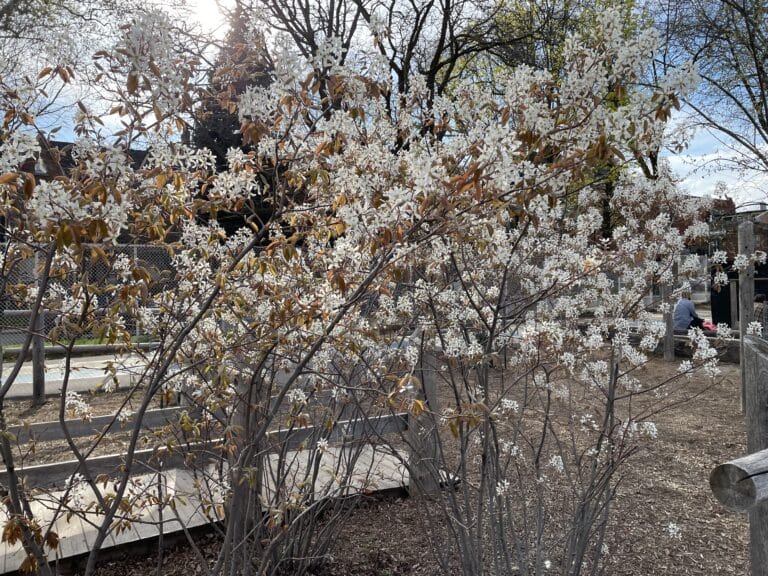Toronto’s Winter Weather: Why Winter Tree Pruning Matters
Toronto’s winters can be unpredictable and harsh, with heavy snow, ice storms, and freezing winds putting stress on trees and infrastructure alike. But while winter might seem like a time when everything slows down, it’s one of the busiest and most important seasons for arborists. Winter tree pruning offers a unique opportunity to care for your trees when they’re dormant, setting them up for a healthy and vibrant spring.
In this guide, we’ll explore why winter is the ideal time for tree pruning, how Toronto’s unique environment impacts tree care, and why working with certified arborists can make all the difference.
What Is Tree Dormancy? Understanding Your Toronto Trees
When the temperature drops and days shorten, Toronto’s trees enter a dormant phase—a kind of winter hibernation that allows them to conserve energy and prepare for the growing season ahead.
- Why Trees Become Dormant: Deciduous trees shed their leaves and slow their metabolism, focusing their energy on maintaining essential life functions. This helps them survive cold weather, reduced light, and limited water availability.
- How Dormancy Protects Trees: Think of dormancy as a rest period. By pausing active growth, trees can store energy for new buds, leaves, and branches in spring.
For homeowners, this dormant period is the perfect time to give your trees the attention they need to thrive.
Why Winter Tree Pruning Is Essential
Pruning trees during their dormant phase offers several key benefits, both for their health and for protecting your property. Here’s why winter pruning works so well:
1. Reduced Stress for Trees
When trees are actively growing in spring and summer, pruning can disrupt their processes, forcing them to divert energy toward healing instead of growth. In winter, trees like Norway maples, silver maples, and oaks are in a low-energy state, meaning pruning causes less stress and allows for easier recovery.
For Toronto homeowners, this is especially important for urban trees already dealing with stressors like soil compaction, road salt, and air pollution.
2. Encourages Healthy Spring Growth
Winter pruning acts as a “reset” for your trees, removing dead, damaged, or diseased branches before the growing season begins. This ensures that when spring arrives, your trees can focus their energy on developing strong, healthy branches and lush foliage.
For flowering and fruiting trees, winter pruning can also enhance blooming and fruit production. Imagine your garden filled with vibrant blossoms, thanks to the care you provided in winter!
3. Prevents Winter Storm Damage
Toronto winters are no stranger to heavy snowfalls and icy winds, which can wreak havoc on weak or overextended branches. Pruning in late fall or early winter removes these hazards before storms hit, reducing the risk of property damage or injury.
Toronto tree species vulnerable in winter: Cedars, a popular choice for Toronto hedges, are particularly vulnerable to winter damage. Without proper hedge care, their branches can become overloaded with snow or ice, leading to breakage.
4. Improved Visibility for Arborists
Without leaves obscuring the view, winter offers arborists a clear look at a tree’s structure. This allows them to:
- Identify and remove problematic branches more effectively.
- Shape the tree for better airflow and balanced growth.
- Assess the overall health of the tree, especially for species like silver maples and Norway maples with dense canopies.
This improved visibility ensures that winter pruning is precise and impactful.
5. Minimizes Risks from Pests and Diseases
Winter’s cold temperatures naturally suppress many pests and pathogens that thrive in warmer months. Pruning during dormancy minimizes the risk of infection or infestation.
Pro Tip: For species like oaks, winter pruning is critical to prevent the spread of diseases like oak wilt, which can devastate trees if pruned during active beetle seasons.
How Toronto’s Urban Environment Impacts Tree Care
Toronto’s unique urban environment presents specific challenges for tree maintenance:
- Proximity to Infrastructure: Trees growing near hydro wires, homes, and sidewalks face increased risks during storms. Regular pruning helps prevent damage and ensures trees remain safe.
- Restricted Root Zones: Urban trees often grow in compacted soil or confined spaces, limiting their stability and nutrient absorption. Pruning reduces stress on these vulnerable trees.
- Aging Canopy: Many of Toronto’s trees, like Norway and silver maples in neighborhoods such as Rosedale and High Park, are nearing the end of their natural lifespans. Winter pruning can extend their life and reduce the risk of branch or trunk failure.
What About Evergreens? Can They Be Pruned in Winter?
Yes! Evergreen trees, like emerald cedars and white spruces, also benefit from winter pruning. While their dormancy is less noticeable, they still experience slowed growth during the colder months.
Advantages of Evergreen Pruning in Winter:
- Reduces risks of snow or ice damage by removing overextended branches.
- Improves airflow and light penetration, encouraging healthy growth.
- Ensures hedges and privacy screens maintain their shape and density.
Why Winter Pruning Benefits Homeowners
Winter pruning isn’t just good for your trees—it’s also convenient for you:
- Flexible Scheduling: Arborists are often more available during winter, making it easier to book a service that fits your schedule.
- Lower Costs: Many tree care companies offer discounts during the slower winter months.
- Less Yard Disruption: Frozen ground and dormant gardens mean less damage to your landscaping from falling debris or equipment.
Choose Certified Arborists for Winter Tree Care
Not all trees are the same, and pruning them incorrectly can do more harm than good. That’s why working with a certified arborist is crucial.
Why Work with a Certified Arborist in Toronto?
- Expertise in local tree species and challenges
- Compliance with Toronto’s Private Tree By-law.
- Insurance and WSIB coverage for peace of mind.
Book Your Winter Tree Pruning Today
Winter tree pruning is an essential part of maintaining healthy, beautiful trees in Toronto’s unique urban environment. By caring for your trees during their dormant phase, you’re setting them up for a vibrant and resilient spring.
Don’t wait until it’s too late—contact us today to schedule your winter pruning with our team of certified arborists.
Sources:
Tree Care Industry Association – Pruning to ANSI Standards
ISA Ontario – Oak Wilt
City of Toronto – Pruning Standards








